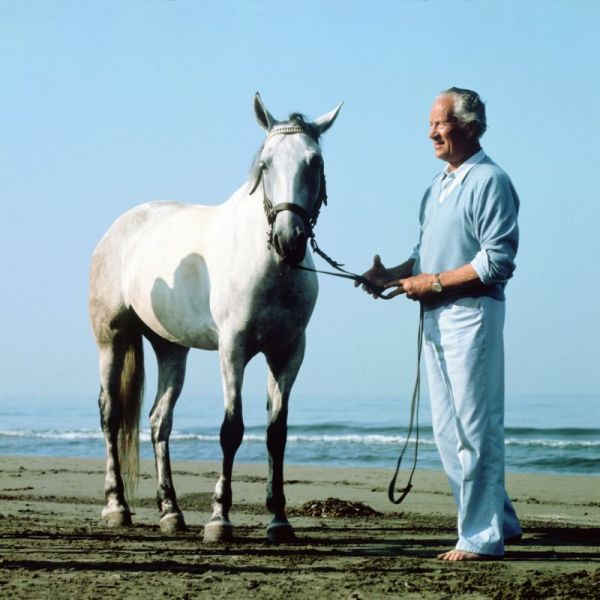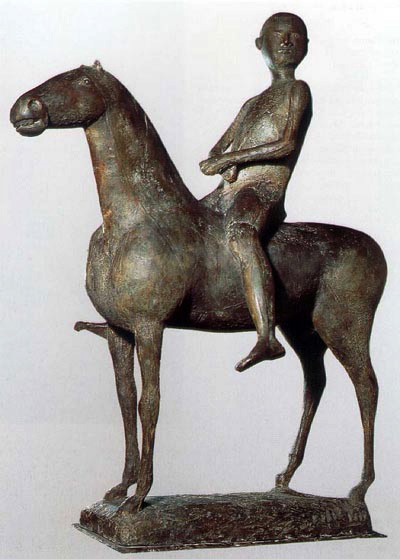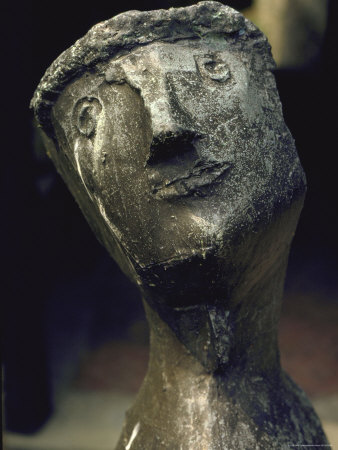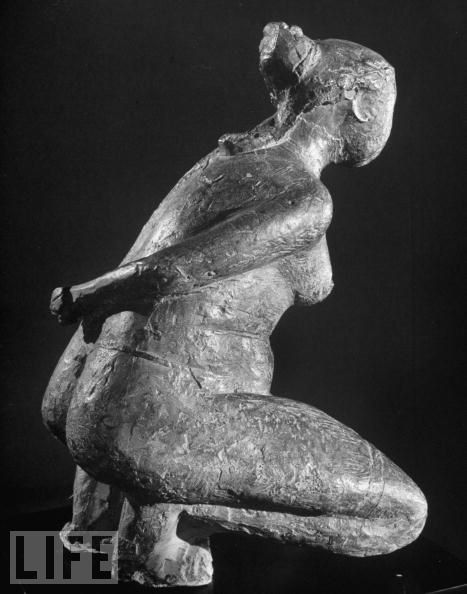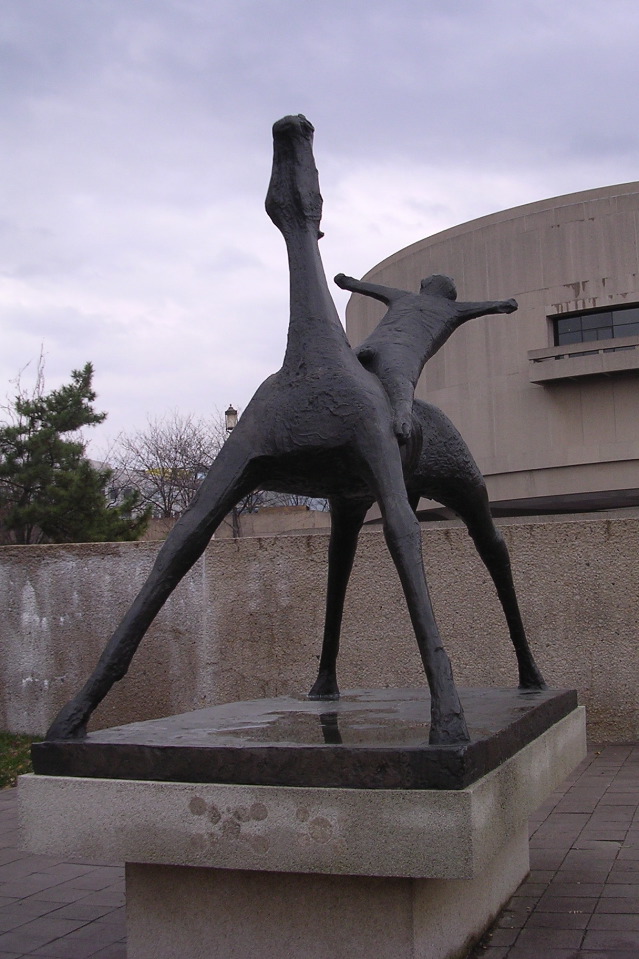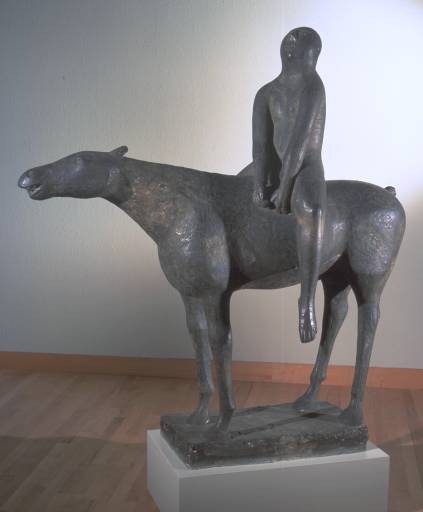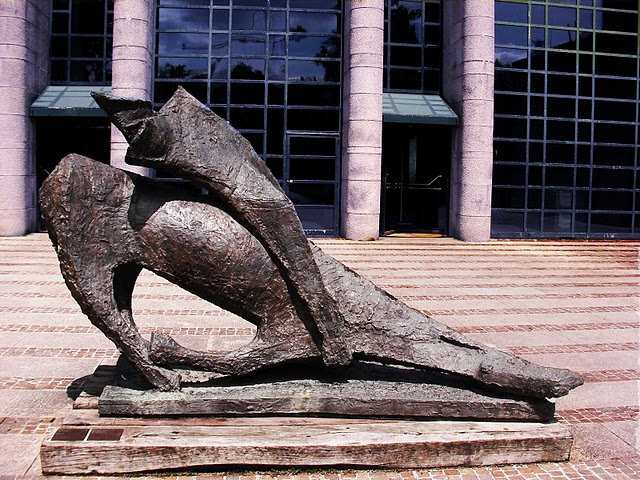<Back to Index>
- Physician Charles Herbert Best, 1899
- Sculptor Marino Marini, 1901
- Prince of Wallachia and Moldavia Constantine Mavrocordatos, 1711
PAGE SPONSOR
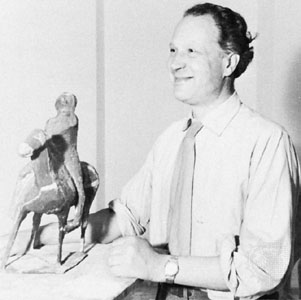
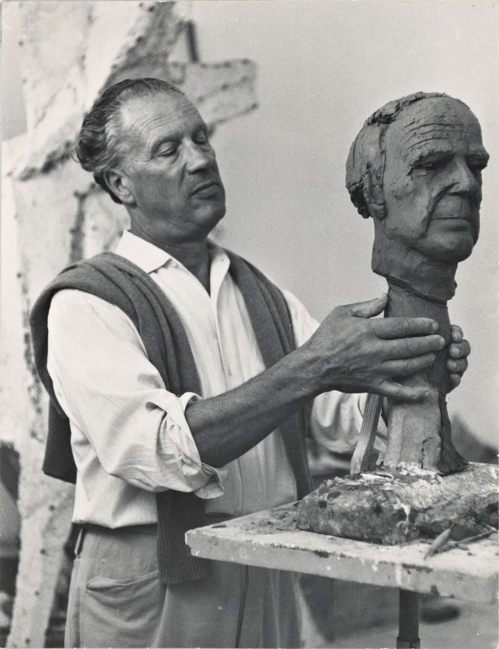
Marino Marini (February 27, 1901 - August 6, 1980) was an Italian sculptor.
Born in Pistoia, Marini is particularly famous for his series of stylised equestrian statues, which feature a man with outstretched arms on a horse. Probably the most famous example is The Angel of the City at the Peggy Guggenheim Collection, Venice.
He attended the Accademia Di Belle Arti in Florence in 1917. Although he never abandoned painting, Marini devoted himself primarily to sculpture from about 1922. From this time his work was influenced by Etruscan art and the sculpture of Arturo Martini. Marini succeeded Martini as professor at the Scuola d’Arte di Villa Reale in Monza, near Milan, in 1929, a position he retained until 1940. During this period Marini traveled frequently to Paris, where he associated with Massimo Campigli, Giorgio de Chirico, Alberto Magnelli, and Filippo Tibertelli de Pisis. In 1936 he moved to Tenero - Locarno, in Ticino Canton, Switzerland; during the following few years the artist often visited Zürich and Basel, where he became a friend of Alberto Giacometti, Germaine Richier and Fritz Wotruba. In 1936 he received the Prize of the Quadriennale of Rome. He accepted a professorship in sculpture at the Accademia di Belle Arti di Brera, Milan, in 1940.
In 1946 the artist settled permanently in Milan. He participated in Twentieth-Century Italian Art at the Museum of Modern Art in New York in
1944. Curt Valentin began exhibiting Marini’s work at his Buchholz
Gallery in New York in 1950, on which occasion the sculptor visited the
city and met Jean Arp, Max Beckmann, Alexander Calder, Lyonel Feininger, and Jacques Lipchitz. On his return to Europe, he stopped in London, where the Hanover Gallery had organized a solo show of his work, and there met Henry Moore.
In 1951 a Marini exhibition traveled from the Kestner-Gesellschaft
Hannover to the Kunstverein in Hamburg and the Haus der Kunst of Munich. He was awarded the Grand Prize for Sculpture at the Venice Biennale in 1952 and the Feltrinelli Prize at the Accademia dei Lincei in Rome in 1954. One of his monumental sculptures was installed in the Hague in 1959. Retrospectives of Marini’s work took place at the Kunsthaus Zürich in 1962 and at the Palazzo Venezia in
Rome in 1966. His paintings were exhibited for the first time at
Toninelli Arte Moderna in Milan in 1963 – 64. In 1973 a permanent
installation of his work opened at the Galleria d’Arte Moderna in
Milan, and in 1978 a Marini show was presented at the National Museum
of Modern Art in Tokyo. Marini died in Viareggio. There is a museum dedicated to his work in Florence (in the former church of San Pancrazio); his work may also be found in museums in Italy and around the world, such as the Civica Galleria d'Arte Moderna in Milan and the Hirshhorn Museum and Sculpture Garden in Washington, D.C. Marini's work is authenticated by the experts at the Marino Marini Foundation in Pistoia, Italy.
